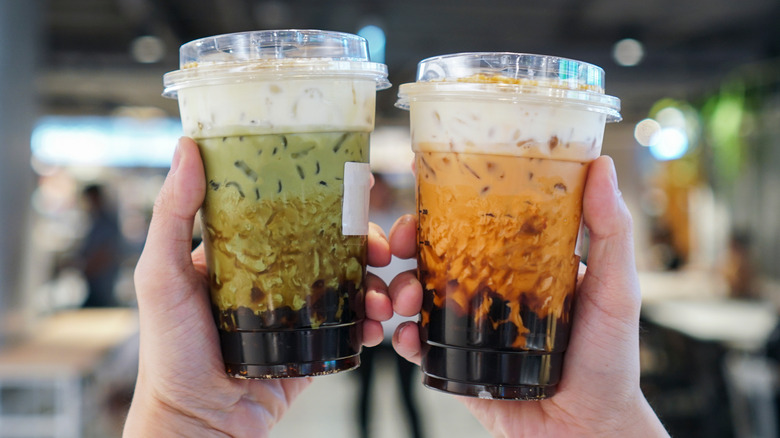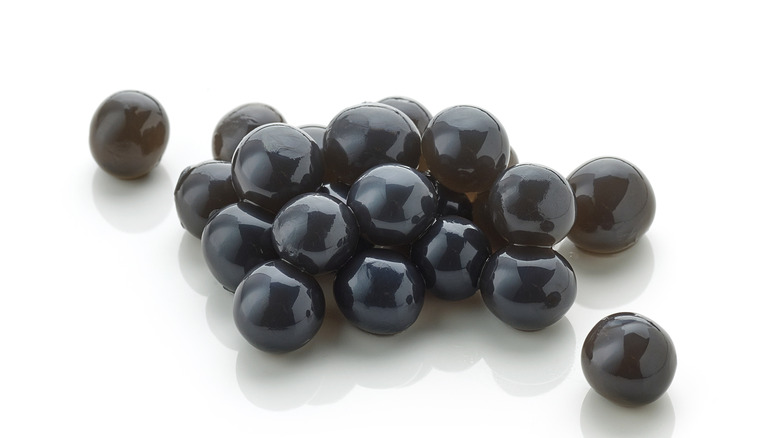How Boba Tea Sent Someone To The Hospital
In 2019, an adolescent girl went to a hospital in Zhejiang, China complaining about a case of constipation that had lasted five days. Alarmed, doctors searched for the usual signs of digestive issues but, according to Asia One, found nothing. So, they performed a CT scan. Then, they found something: boba.
Despite the girl's insistence that she had only had one of the popular drinks, made with tapioca pearls, prior to the onset of her issues, the scan revealed hundreds of spherical shapes throughout her intestines and colon. Because the pearls are made from starch, they are actually quite difficult for the human body to digest, not to mention the extra thickeners some companies may add to them.
If you're a fan of boba, know that the extraordinary sight in this case turned out to be the result of excessive consumption of the tea drink (with literally 100s of the pearls found). Then again, maybe the recent boba shortage in America isn't such a bad thing to give our bodies a break.
Boba tea can present some other problems
While it would be rare for someone's digestive system to be backed up with large amounts of tapioca pearls because of an occasional boba tea treat, the drink in general should be enjoyed in moderation. Even if it's classified as a tea.
While Eater has commented on fears of choking that also come along with this drink, as Healthline shows, boba tea in general contains some not so great ingredients: in addition to the tapioca balls, there's quite a bit of sweetener and milk. The sugar in a boba milk tea is around 36 grams with 10.6 grams of fat. Alternatively, as the site suggests, you could go for the non-milk bubble tea which has no fat, but still packs in 54 grams of sugar.
So, even if the young girl in China eventually digested the ridiculous plenitude of tapioca pearls (thanks to a good dose of laxatives), the sheer amount of bubble tea she consumed could have hospitalized her for other reasons.

